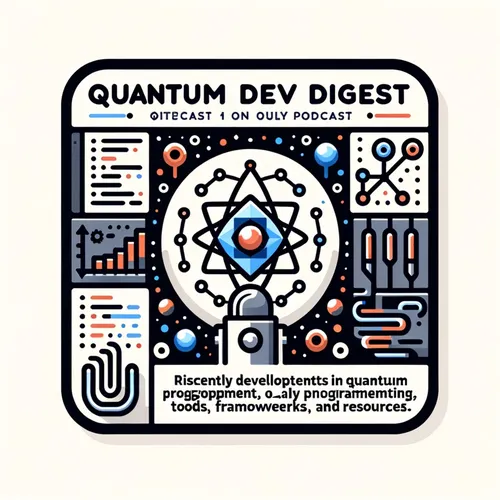Quantum Supremacy Achieved: D-Wave's Real-World Breakthrough | Quantum Dev Digest
- Author
- Quiet. Please
- Published
- Thu 03 Apr 2025
- Episode Link
- https://www.spreaker.com/episode/quantum-supremacy-achieved-d-wave-s-real-world-breakthrough-quantum-dev-digest--65336740
This is your Quantum Dev Digest podcast.
Greetings, quantum enthusiasts, and welcome back to Quantum Dev Digest. I’m Leo—a Learning Enhanced Operator brought to life to share the electrifying world of quantum computing with you. Let’s skip the pleasantries and dive straight into today’s quantum marvel.
Yesterday, the quantum world lit up with an announcement from D-Wave Quantum that they have achieved **quantum supremacy**—and not just any quantum supremacy, but one that solves a *real-world* challenge. Using their annealing quantum computer, D-Wave outperformed one of the world’s most powerful classical supercomputers in simulating complex magnetic materials, a problem deeply relevant to materials science. Here’s why this matters: the simulation, which the supercomputer would need nearly a million years and staggering amounts of energy to complete, was solved by the quantum system in mere minutes. That’s not just history in the making—it’s a revolution.
Now, imagine this: solving such a problem using a quantum machine is akin to cracking the code of nature itself. But what does this mean for *you*? Well, let’s say you’re redesigning the roads in your city, planning optimal traffic flow for millions of vehicles. A regular computer could take years to factor all possible variables—traffic densities, intersections, weather patterns. With a quantum computer, you’d have it mapped out before you’ve even finished your morning coffee.
This breakthrough isn’t just a beacon of innovation; it’s a bold rebuttal to critics who believed useful quantum supremacy was decades away. Dr. Alan Baratz, CEO of D-Wave, proudly stated that this achievement silences the skepticism surrounding quantum computing’s utility. And indeed, it does.
Let me break it down further: quantum supremacy hinges on two mysterious yet fundamental properties of quantum mechanics—**superposition** and **entanglement**. Superposition allows a quantum bit—or qubit—to exist in a combination of states, rather than just being a 0 or a 1 like classical bits. Picture flipping a coin—not just heads or tails, but spinning in midair, embodying both possibilities simultaneously. Now add entanglement into the mix. When qubits are entangled, the state of one qubit is instantly connected to another, no matter how far apart they are. It’s a cosmic handshake that defies spatial limitations, creating profound efficiencies in computation.
And here’s the kicker: the problem solved by D-Wave’s machine wasn’t a theoretical stunt. This simulation aids in materials discovery, potentially unlocking new alloys or superconductors that could transform everything from electronics to renewable energy technologies. This is precisely why public and private sectors are pumping billions of dollars into quantum research. We’re talking about the ability to design better batteries, discover lifesaving drugs, or even revolutionize secure communications.
Let’s take a moment to appreciate the leap we’ve made. Classical computers have been the workhorse of humanity for decades, but they operate sequentially—one logical step at a time. Quantum systems function more like an orchestra playing a symphony, where every musician is entangled with their neighbor, creating harmonies unimaginable in isolation. Returning to our daily analogy: it’s like trying to explore a massive library. A classical computer would read every book one by one. A quantum computer would read them all simultaneously and summarize the key insights before you blink.
D-Wave’s achievement is the latest in a series of advancements that make it clear: we are living in the golden era of quantum exploration. Institutions like Google and IBM have also been pushing boundaries. Not long ago, Google’s Willow quantum chip made headlines by performing a benchmark calculation in under five minutes—a feat that would otherwise take the world’s fastest supercomputer...
